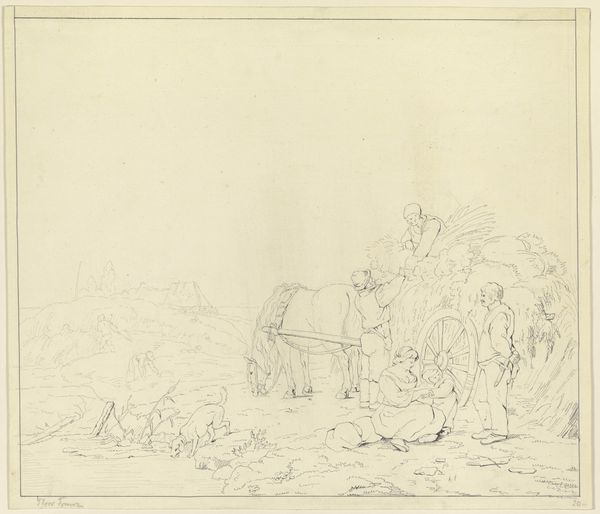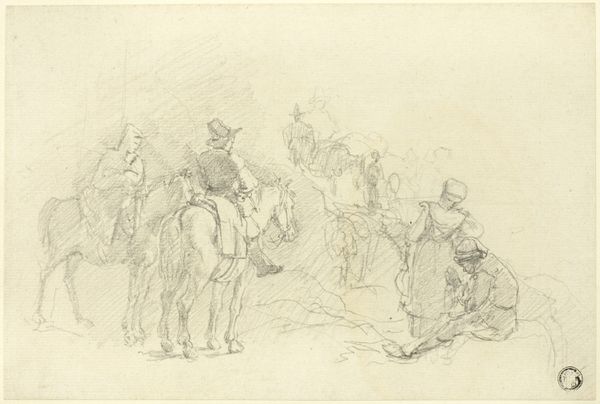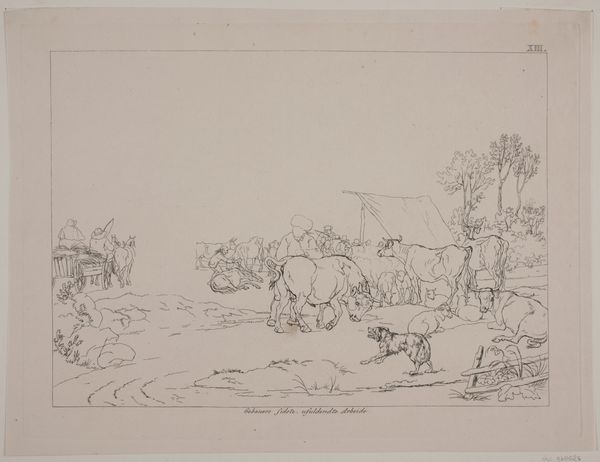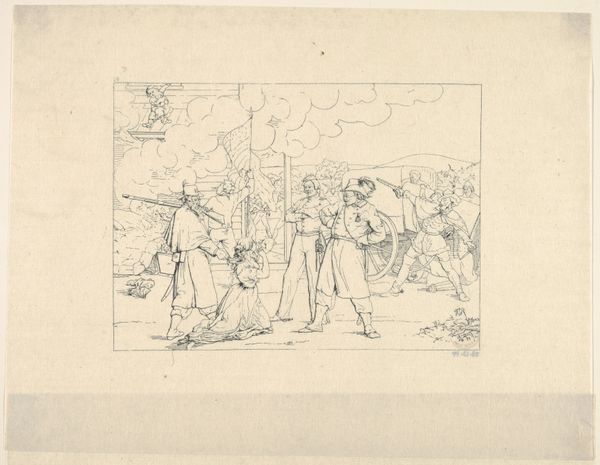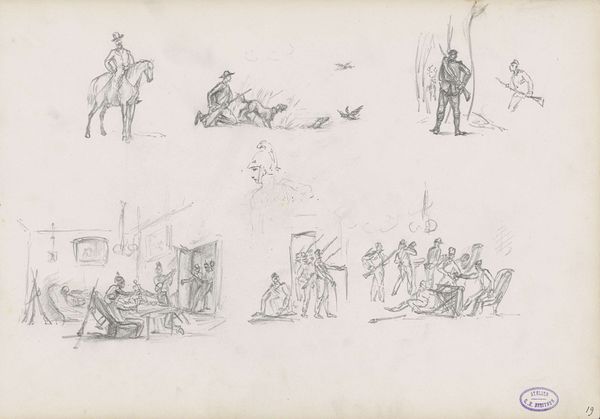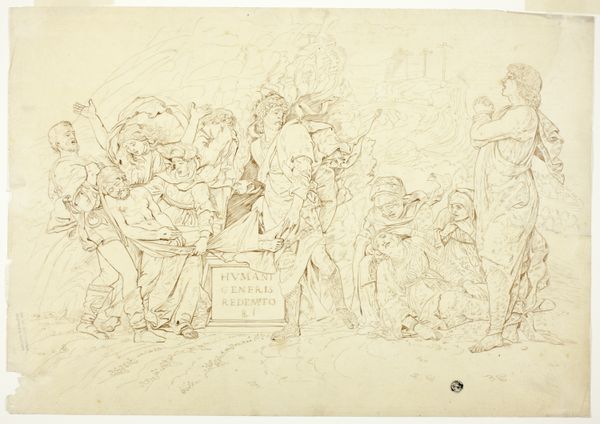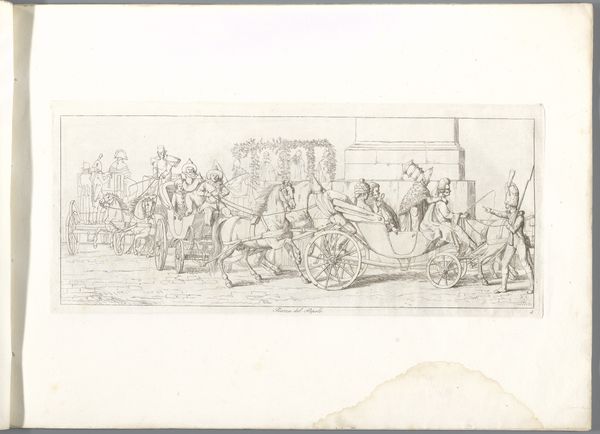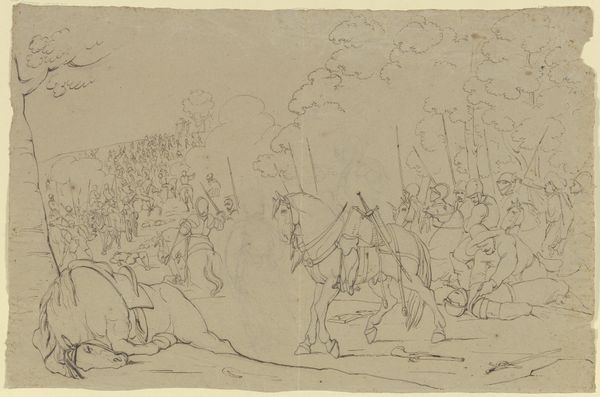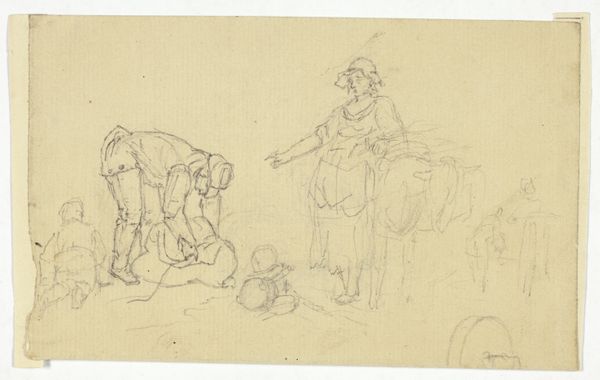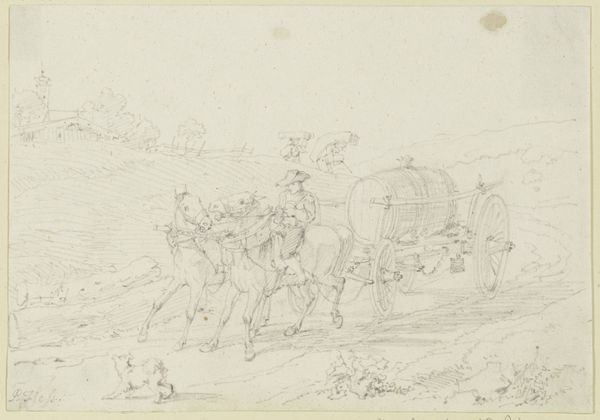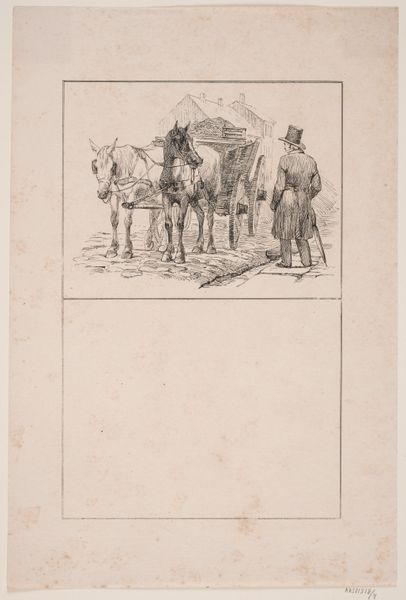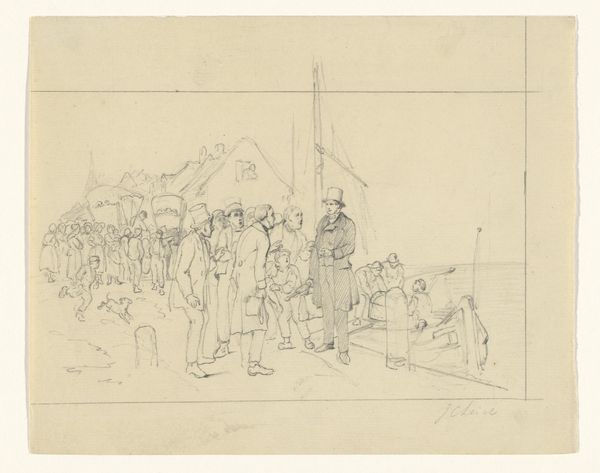
drawing, pencil
#
drawing
#
landscape
#
romanticism
#
pencil
#
genre-painting
Dimensions: 242 mm (height) x 419 mm (width) (bladmaal)
Editor: So, this is Johan Thomas Lundbye’s pencil drawing, "Campagnoler udenfor et osteri," from 1845. It's held at the SMK, the National Gallery of Denmark. It feels almost like a snapshot, capturing a moment in the lives of these working people. What do you see in this piece? Curator: I see a romanticized vision of rural life, one that idealizes the working class while perhaps overlooking the socio-economic realities. Notice the carefully constructed composition – the placement of figures, the use of light – it’s all designed to evoke a sense of harmony and order. But what stories are not being told here? Who benefits from this picturesque representation of labor? Editor: That's interesting. I was mostly thinking about the tranquil atmosphere and the almost casual interaction between the figures. Curator: Yes, the tranquility is deliberate, reinforcing a specific narrative. Think about the social context of 1845 Denmark. Who was Lundbye painting for? What was his relationship to the Campagnoler he depicts? Was he, perhaps, presenting a reassuring image of social stability in a time of growing social unrest? It is necessary to question these seemingly harmless, or even pleasant, portrayals. Editor: I hadn't considered that. I was so focused on the scene itself. What do you make of the way he renders the figures; their clothing and expressions? Curator: Their clothes and general postures can appear deceptively candid; however, by imbuing their faces with only the slightest suggestion of emotional labor and painting them using romantic techniques that further diminish hints of harsh or negative feelings, Lundbye might be silencing any potential criticisms they may have harbored with regards to labor conditions, quality of life, social issues or other sources of exploitation that may have been perpetuated by those that commission landscape art to begin with. Editor: This has totally shifted my perspective! Now I see it less as a neutral snapshot and more as a carefully constructed narrative with potential social implications. Curator: Exactly! It's about understanding how art can both reflect and shape societal perceptions. The historical, political, and intersectional narratives are often entwined, urging us to unpack all these elements.
Comments
No comments
Be the first to comment and join the conversation on the ultimate creative platform.
